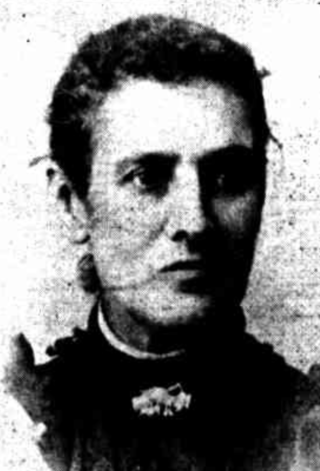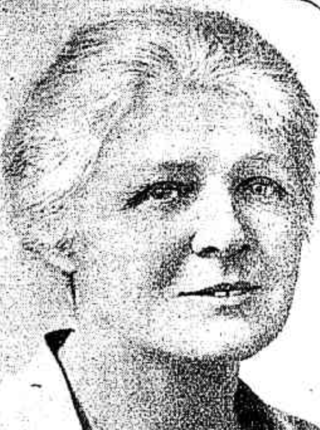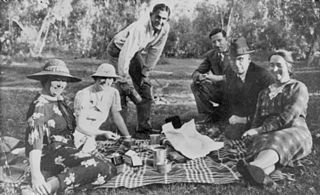
Catherine Helen Spence was a Scottish-born Australian author, teacher, journalist, politician, leading suffragist, and Georgist. Spence was also a minister of religion and social worker, and supporter of electoral proportional representation. In 1897 she became Australia's first female political candidate after standing (unsuccessfully) for the Federal Convention held in Adelaide. Called the "Greatest Australian Woman" by Miles Franklin and by the age of 80 dubbed the "Grand Old Woman of Australia", Spence was commemorated on the Australian five-dollar note issued for the Centenary of Federation of Australia.

Emma Miller was an English-born Australian pioneer trade union organiser, suffragist, and key figure in organisations which led to the founding of the Australian Labor Party in Brisbane, Queensland, Australia.

Mary Lee was an Irish-Australian suffragist and social reformer in South Australia.
Government in Australia is elected by universal suffrage and Australian women participate in all levels of the government of the nation. In 1902, the newly formed Commonwealth of Australia became the first nation on earth to enact equal suffrage, enabling women to both vote and stand for election alongside men Women have been represented in Australian state parliaments since 1921, and in the Federal Parliament since 1943. The first female leader of an Australian State or Territory was elected in 1989, and the first female Prime Minister took office in 2010. In 2019 for the first time, a majority of members of the Australian Senate were women. At the time of its foundation in 1901, and again from 1952 to 2022, Australia has had a female monarch as ceremonial Head of State, while the first female Governor of an Australian State was appointed in 1991, and the first female Governor-General of Australia took office in 2008.

Catherine Winifred "Kate" Dwyer was an Australian educator, suffragist, and labour activist.

George Mason Burns was an Australian politician. He was an Australian Labor Party member of the Australian House of Representatives from 1913 to 1917, representing the electorate of Illawarra. He had previously been a member of the Tasmanian House of Assembly from 1903 to 1906.

Women's suffrage in Australia was one of the early achievements of Australian democracy. Following the progressive establishment of male suffrage in the Australian colonies from the 1840s to the 1890s, an organised push for women's enfranchisement gathered momentum from the 1880s, and began to be legislated from the 1890s, decades in advance of Europe and North America. South Australian women achieved the right to vote in 1894, and to stand for office in 1895 following the world first Constitutional Amendment Act 1894. This preceded even male suffrage in Tasmania. Western Australia granted women the right to vote from 1899, although with some racial restrictions. In 1902, the newly established Australian Parliament passed the Commonwealth Franchise Act 1902, which set a uniform law enabling women to vote at federal elections and to stand for the federal parliament. By 1908, the remaining Australian states had legislated for women's suffrage for state elections. Grace Benny was elected as the first councillor in 1919, Edith Cowan the first state Parliamentarian in 1921, Dorothy Tangney the first Senator and Enid Lyons the first Member of the House of Representatives in 1943.

Serena Lake was an English Australian suffragist, temperance activist, and evangelical preacher in South Australia.

Elizabeth Rose Hanretty (1881–1967) was an Australian political activist. She was a prominent woman in the labour movement, and served as the Australian Labor Party's South Australian assistant state secretary for forty years.

Phoebe Chapple MBBS BSc was a South Australian medical doctor, decorated for her heroic service in France during World War I.

Ada Mary à Beckett MSc, née Lambert, was an Australian biologist, academic and leader of the kindergarten movement in Australia. She was the first woman appointed lecturer at Melbourne University.
Dorothy Sargent Coombe was an early Australian trade unionist. She was a long-running assistant secretary of the Australian Government Workers Association, setting a record in this capacity, and was the first woman in South Australia to advocate in the Industrial Court. She was often referred to as Miss Coombe.

Marjorie Chave Collisson, generally known as Chave or M. Chave Collisson, was an activist in Australia and Great Britain for several feminist causes.

Salome Jean White was the first female flying medical doctor in Australia and the world when she commenced work with the Australian Inland Mission in May 1937. She was known as the Guardian Angel of the Gulf.
Seebaer van Nieuwelant, son of Willemtgen and Willem Janszoon, was born south of Dirk Hartog Island, in present-day Western Australia. His father, not to be confused with the earlier Dutch explorer of the same name, was a midshipman from Amsterdam. He and his wife were aboard the Leijden, commanded by Claes Hermanszoon, which was charting the coast at the time. Their son's name in Dutch meant "sea-born of new land".
Lilian Staple Mead was an Australian suffragette and children's book author. She was the only female student ever educated at Adelaide's Prince Alfred College.

Dame Ruby Beatrice Litchfield DBE was an Australian theatre director, board member and community worker.

Vera Gladys Dwyer was an Australian novelist. She also contributed stories to magazines and newspapers.

Lillian Wheeler was an Australian actor.
Mum Dawson, 'Boss' is a 1911 Australian novel by Sumner Locke.














